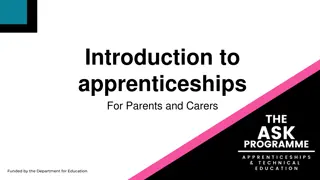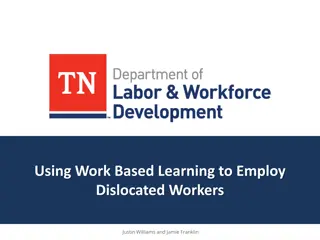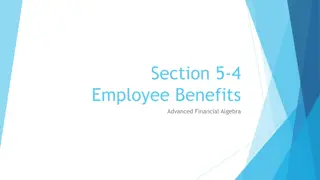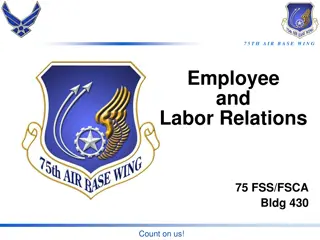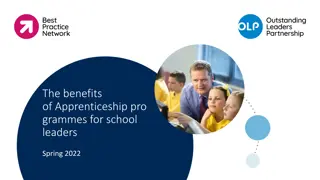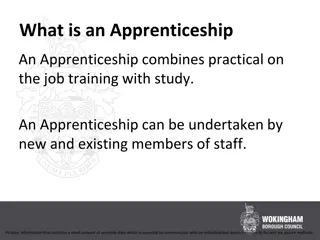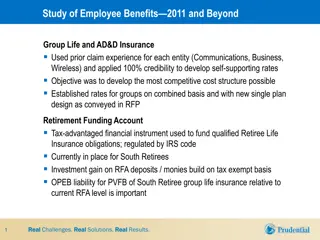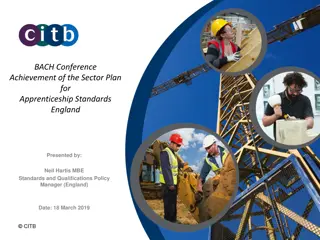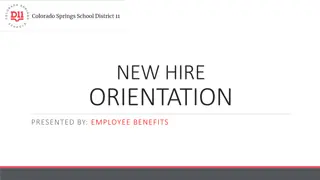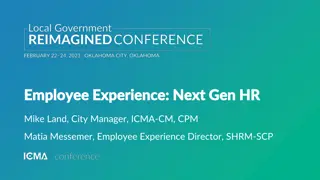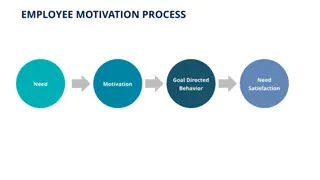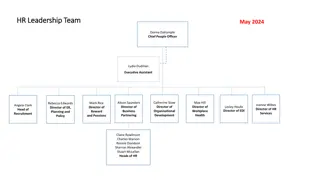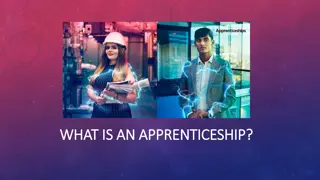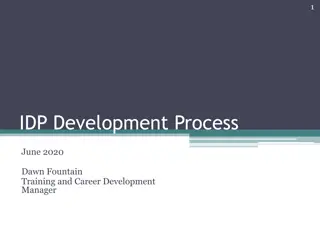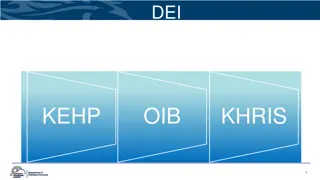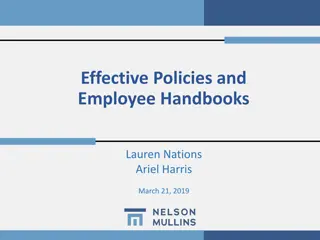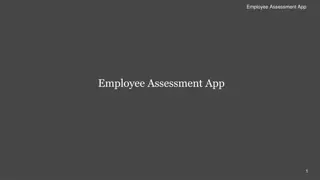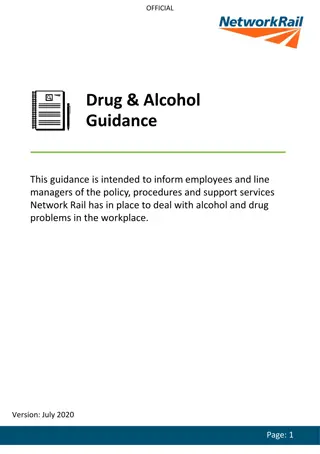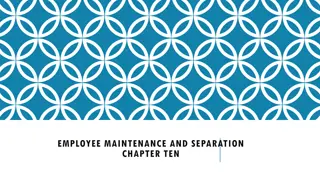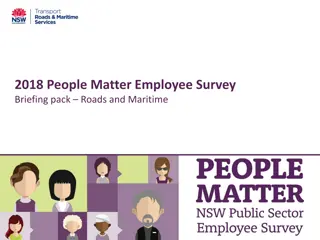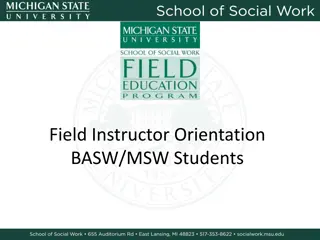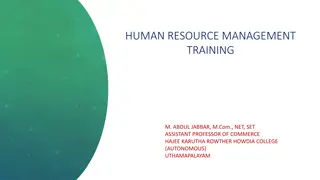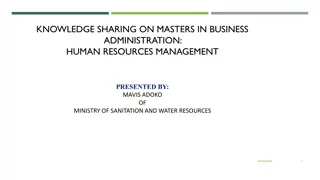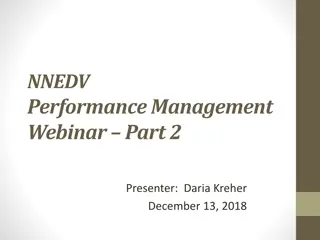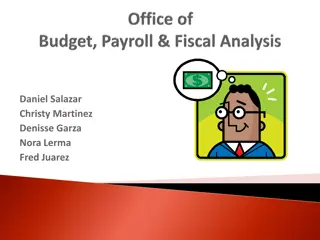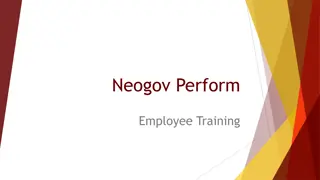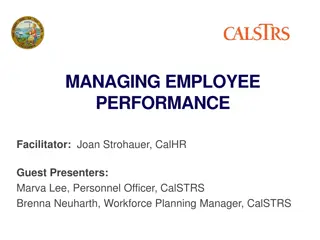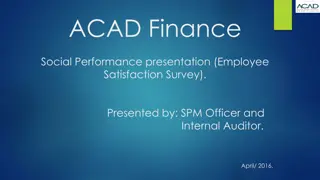Understanding Employee Apprenticeships: Benefits, Responsibilities, and Guidance
An apprenticeship is a job with training where apprentices gain technical knowledge, practical experience, and essential skills. This program includes on-the-job training, off-the-job training, and nationally recognized qualifications. Employers can utilize apprenticeships to nurture new talent or develop existing employees. The apprenticeship levels and standards vary, and employers have responsibilities towards apprentices. By understanding the myths, benefits, and guidance available, one can fully leverage the apprenticeship program.
Download Presentation

Please find below an Image/Link to download the presentation.
The content on the website is provided AS IS for your information and personal use only. It may not be sold, licensed, or shared on other websites without obtaining consent from the author. Download presentation by click this link. If you encounter any issues during the download, it is possible that the publisher has removed the file from their server.
E N D
Presentation Transcript
Employee Apprenticeships Line Manager s Briefing Claire Cross Employee Apprenticeships Manager Resourcing Team, People & Culture
Contents What is an apprenticeship? Who are they for? Some of the myths about the apprenticeship programme What are the benefits of hiring apprentices? What are the employer responsibilities? How is it funded and apprenticeship standards Line manager s guidance/advice Where do I find more information? Slide 2
What is an apprenticeship? An apprenticeship is a job with training. Through an apprenticeship, an apprentice will gain the technical knowledge, practical experience and wider skills and behaviours that they need for their immediate job and future career. The apprentice gains this through: formal off-the-job training (which is fundable by government, provided both the individual and the programme can comply with funding rules); and the opportunity to apply these skills in a real work environment through on-the-job training (which is the responsibility of the apprentice s employer). ESFA Apprenticeship Funding Rules & Guidance for Employers, E15, Version 2, Aug 21 to July 22 Slide 3
What is an apprenticeship (continued)? Alongside on-the-job training apprentices spend at least the equivalent of 6 hours a week completing off the job training which leads to a nationally recognised qualification. Off-the-job training can take place in or out of the work environment and is delivered by subject experts. It can be delivered flexibly (e.g. as part of each day, once a week or as block release) and include: Teaching theory (eg. classroom lessons, lectures and online learning) Practical training (eg. shadowing, mentoring, industry visits) Learning support and time to write assessments Slide 4
Apprenticeship Levels & Standards Different apprenticeship levels equate to different qualification levels. Some levels require previous qualifications such as English or maths GCSEs and/or additional training in English or maths to ensure the apprentice is at the right level. Name Level Education Level Intermediate 2 GCSE Advanced 3 A level Higher 4 and 5 Foundation degree Degree 6 and 7 Bachelors or Masters degree Across the University sector, 80 standards are currently being used most popular include Academic Professional (L7), Accountancy/Taxation Professional (L7)/Technician (L4), Senior Leader (L7), Team Leader/Supervisor (L3), Operations or Departmental Manager (L5), Business Administrator (L3), HR Consultant Partner (L5), Data Analyst (L4), Customer Service (L3), Associate Project Manger (L4) Slide 5
Who are they for? Employers can offer apprenticeships to new entrants or use them to grow talent among current employees. They are for individuals over the age of 16 spending at least 50% of their working hours in England over the duration of their apprenticeship who are not in full time education. To use funds in the apprenticeship service account an individual must meet the funding eligibility criteria (e.g. have the right to work in England) see E59 (page 21) 2122_Employer_Rules_Version_2__To_publish.pdf (publishing.service.gov.uk). Prior learning is now not a restriction if new learning is being acquired Slide 6
Some of the top myths about the apprenticeship programme MYTH : APPRENTICESHIPS CANNOT BE USED FOR EXISTING STAFF FACT : Apprenticeships can be used to upskill and/or retrain employees of any age, including older workers or existing staff, as long as the apprentice is giving them new skills to enable them to achieve competence in their chosen occupation. MYTH : APPRENTICESHIPS ARE ONLY ENTRY LEVEL THEY ARE FOR LOW SKILLED PEOPLE FACT : Apprenticeships are available from Level 2 (GCSE equivalent) right through to Levels 6 and 7 (equivalent to a Bachelor s or Master s degree). Some apprenticeships may also offer additional professional qualifications such as ACCA. MYTH : APPRENTICESHIPS ARE ONBLY FOR YOUNG PEOPLE (16-18) FACT : Apprenticeships are available to people of all ages; anyone over the age of 16 living in England can apply. There are different entry requirements depending on the industry, job role and apprenticeship level. MYTH : APPRENTICES SPEND A LOT OF TIME AWAY FROM THE WORKPLACE FACT : Apprenticeships are about upskilling an individual. Many employers and apprentices have praised the positive effect off-the-job training has on their productivity and apprentices feel valued by the investment in their training. Off- the-job training can be delivered flexibly, for example, as part of each day, one day per week, one week out of five or as block release. It can also often be delivered online. Existing training programmes, materials and work activity (imparting new knowledge) can be used to deliver elements of the off-the-job training. 7 Slide
What are the benefits of hiring apprentices? Hiring an apprentice is a productive and effective way for any business to grow talent and develop a motivated, skilled and qualified workforce, and to help fill skills gaps. Employers who have an established apprenticeship programme reported that productivity in their workplace improved by 76%, whilst 75% reported that apprenticeships improved the quality of their product or service. Other benefits that apprenticeships contribute towards include: - Increasing employee satisfaction - Reducing staff turnover - Reducing recruitment costs Slide 8
What are the employer responsibilities? Have a genuine job available with a contract of employment long enough for an apprentice to complete their apprenticeship. Pay an apprentice s wages and ensure the role will help them gain the knowledge, skills and behaviours they need to achieve the apprenticeship with their support. Select a training provider from the Register of Apprenticeship Training Providers and agree a total price for the cost of training and assessment, including the End Point Assessment cost Ensure for 16/17 yr olds working hour rules are adhered to Ensure that apprenticeship funding is being used for adequate new learning as apprenticeship funding cannot be used to pay for knowledge, skills and behaviours already attained by the apprentice Slide 9
How is an apprenticeship funded? From department budget Salary Cost of From central apprenticeship levy (if eligible learner) training/assessment Support for Apprentice Some central resources available Ineligible costs e.g. travel, PPE, exam fees, registration with professional bodies From department budget at discretion of budget holder Slide 10
Apprenticeship Standards Regulation: ESFA funding rules (e.g. 20% rule, contracts, apprentice eligibility & quality of provision); compliance & complaints; National Apprenticeship Service Institute for Apprenticeships & Technical Education (IfATE) development & quality of stds, funding caps OFTED/QAA inspectorate for providers EPA: May include qual e.g. degree Work based project Employer approval Portfolio/showcase Exams Independently assessed The Role of the Training Provider: Map out the 20% Theoretic unput Schedule of learning Assessor visits E-portfolio systems Set assignments and prepare apprentice & employer for EPA Additional support (inc for English & maths) Slide 11
What do line managers need to do/consider? If you have recruited a new apprentice straight out of education, they may have limited experience of expectations of them going into their first paid job your support & clear direction will be key Apprentices may be doing a lot of things for the first time help them prepare & feel confident e.g. facilitate shadowing, training, feedback Consider networking opportunities for your apprentice Become familiar with the apprenticeship standard and the knowledge, skills and behaviours that the training covers; look for ways to help reinforce their learning; build in extra support/training; develop an understanding of the EPA requirements Ensure we are adequately safeguarding our apprentices and aware of training provider s procedures Ensure you have a copy of the commitment statement covering: - What the training will consist of and a schedule of when & how it will happen - Details of what each partner is committing to deliver, including relevant employer responsibilities for on-the-job training and time for off-the-job learning - Who to contact and how to handle queries or resolve complaints Slide 12
What do line managers need to do/consider? (continued) Ensure that 16/17 years olds do not work more than 8 hpd and 40 hpw and have appropriate breaks; records of working hours should be kept for 2 years from the date they were made - Rules on working hours for young workers: Young workers, apprentices and work experience - Acas Use it as an opportunity to invest in your knowledge & skills in helping to set someone on a great future career path Set up regular catch ups with your apprentice (to review progress, goals and plan work activities/projects) and consider assigning them a workplace mentor Ensure the Employee Apprenticeships Manager is kept updated and raise any apprenticeship related issues with them Use available support for line managers including via the training provider and own line management support/structure (central and local) Celebrate apprentice success and achievements Help with advice/support regarding next steps e.g. careers guidance, help with internal application processes or interview processes Slide 13
Where do I find more information? Search for an apprenticeship standard - https://www.instituteforapprenticeships.org/apprenticeship-standards/? Our staff directory page - Employee Apprenticeships | University of Essex Email : Claire Cross, Employee Apprenticeships Manager, claire.cross@essex.gov.uk Slide 14


